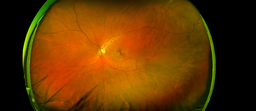Ultra-Low Energy Photoacoustic Microscopy
TECHNOLOGY NUMBER: 2020-253

OVERVIEW
An ultra-low energy photoacoustic microscopy system and its data processing method- High quality imaging of retinal vessels by using laser energy at 1% of listed safety limits
- Comprehensive longitudinal safety evaluation demonstrating no laser damage
BACKGROUND
The optical transparency of the eye permits direct imaging of the retina which allows an ophthalmologist to diagnose a variety of diseases such as macular degeneration, diabetic retinopathy, and retinal vein occlusions. Photoacoustic microscopy (PAM) is an imaging modality that can non-invasively explore the optical absorption properties in biological tissues with high spatial resolution and deep penetration. PAM uses a laser beam to create localized thermoelastic tissue expansion which causes the emission of waves that are detected by ultrasound transducers to provide optical absorption information.
PAM must be used with caution as an imaging methodology since it exposes light-sensitive structures such as photoreceptors to lasers. For this reason, the American National Standards Institute (ANSI) lists safety limits for laser exposure for the ocular imaging system. Though existing PAM techniques create exposures lower than the ANSI published safety requirements, laser safety remains a major concern when using this technology on patients. A need exists to improve the sensitivity of PAM to further decrease the chances for iatrogenic retinal damage.
INNOVATION
Researchers at the University of Michigan developed an ultra-low energy photoacoustic microscopy system and data processing method that achieves high quality imaging of retinal vessels with a laser energy at 1% of the ANSI safety limit. The sensitivity of the PAM system was improved through the use of a multi-channel digitizer for signal acquisition, two stage amplification, and a newly designed high sensitivity needle transducer. By drastically enhancing its signal-to-noise ratio (SNR), the performance of this system worked with significantly reduced laser fluence when it was examined via experiments on a clinically relevant rabbit eye model in vivo. The safety of this system has been validated by histopathology, fluorescein angiography (FA), and fundus photography, paving the road toward clinical application.